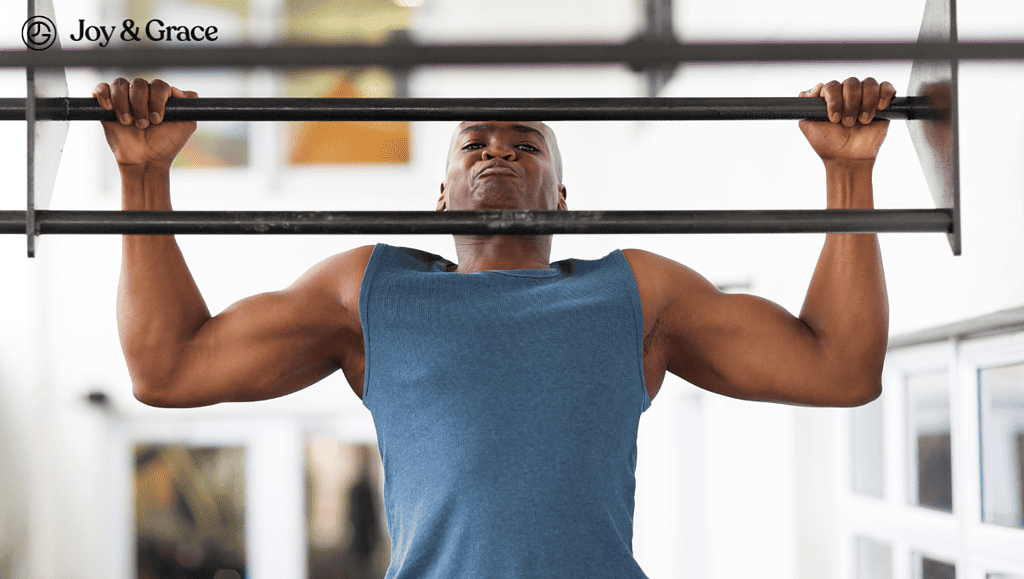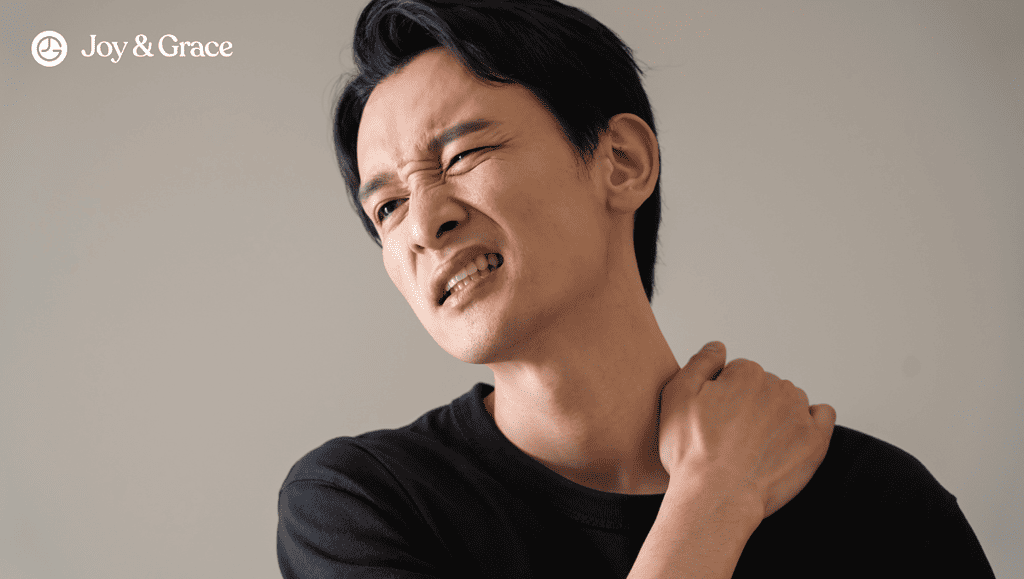If you suffer from chronic shoulder pain, you've probably tried many different treatments and remedies to find relief. From physical therapy to medication, the endless search for a solution can feel like there's no end.
That's where hanging comes in - some proponents claim that simply hanging from a bar can relieve shoulder pain, in addition to being a great upper body workout. It's an intriguing idea and one that's gained some popularity in recent years. But as with any alternative treatment, it's important to approach it with a healthy dose of skepticism.
We'll take a closer look at the concept of hanging for shoulder pain, examining the potential benefits and risks. We'll explore the evidence behind this practice and consider whether it might be a good fit for you. So if you're curious about this intriguing treatment option, read on - and let's explore the world of hanging for shoulder pain together!
Will Hanging From A Bar Help Shoulder Pain?

If you are one of the millions who suffer from shoulder pain, you may be searching for an alternative way to relieve your pain. You may have come across articles or TikTok videos suggesting "hanging" or dead hangs as a potential solution. But the question remains: will hanging in a bar actually help shoulder pain?
The short answer is… maybe.
According to Dr. John Kirsch, orthopedic surgeon and one of the main touters of hanging for shoulder pain, “When the arms are lifted in this position, such as if a person were to hang from a bar, the humerus bone is leaning against the acromion bone – when this happens, the humerus bends the acromion. And in bending the acromion, a person restores the normal anatomy of the shoulder.”
But the truth is, we found no conclusive evidence from research that directly suggests hanging from a bar can relieve shoulder pain. Some of the ways hanging is said to help with shoulder pain may be anecdotal. But that doesn’t mean dead hangs do nothing for your shoulders.
Even more confusing, some studies say that the way our shoulders are when we're on a dead hang might be bad for our shoulders. However, these studies were done with different exercises, not dead hangs. We’ll talk more about that later.
As we go on in this article, we’ll try to dissect the science behind the benefits of hanging for shoulder pain.
How Does Hanging Help With Shoulder Pain?
Here are some of the ways hanging from a bar is said to help with shoulder pain:
Stretching
Hanging from a bar with your arms extended overhead may cause the weight of your entire body to create a gentle pull on your shoulders. This can help to stretch the muscles and other tissues in the shoulder area.
In one study, shoulder pain was reduced after 4 weeks of regular stretching. This is supported by another study in which shoulder flexibility, pain severity, and function were found to be improved after 6 weeks of stretching exercises.
However, it’s important to note that none of these studies incorporated dead hangs into their exercise programs.
Spine Decompression
Another way hanging from a bar is said to help with shoulder pain is spinal decompression. When you hang from a bar, your body weight can gently pull on your spine. This may help to decompress the spine, reducing pressure on the spinal discs and allowing more space for the nerves that exit the spine.
Unfortunately, we couldn’t find any studies that can support this claim.
Improved Posture
Regular hanging can help strengthen the muscles in your upper back and shoulders. This can help improve your posture and relieve pain caused by poor posture.
According to a study, poor posture can be a risk factor for rotator cuff tears. In another study, pain in different areas of the body was relieved after 8 weeks of posture correction exercises. This included shoulder pain.
However, the exercise program didn’t involve hanging from a bar.
Is A Dead Hang Good For Your Shoulders?
Now that we’ve discussed the supposed benefits of hanging for shoulder pain, it’s time to get down to the nitty-gritty. Some studies actually suggest hanging from a bar is not entirely good for your shoulders.
When you’re hanging from a bar, you’re basically raising your arms overhead. In this position, the head of your arm bone (humerus) moves slightly upward before settling into the socket of your shoulder (glenoid).
That might be problematic. According to a study, the humerus can move too much upwards if your rotator cuff muscles are weak. This can decrease the shoulder joint space, leading to shoulder impingement syndrome.
Other studies have also looked into the effects of pull-ups on the shoulders. Pull-ups are another popular exercise that involves hanging from a bar. According to science, raising your arms high can decrease the space within your shoulder, increasing your risk for shoulder impingement.
High arm elevations are typically seen during the starting and descending phases of pull-ups, which are the hanging phases.
Another way to look at the dead hang exercise is whether your shoulders are flexed or extended. Since your arms are raised overhead, your shoulders are forwardly flexed at approximately 180 degrees. Repeated forward flexion of the shoulders can result in shoulder impingement syndrome.
Hanging from a bar also involves gripping with your hands. According to a study, gripping may change the force distribution in your rotator cuff muscles. However, the study did not mention whether this can improve or worsen shoulder pain.
Although these studies have merit, it’s important to note that they didn’t directly look at dead hangs or hanging from a bar.
Does Hanging From A Bar Help Shoulder Bursitis?
No studies suggest hanging from a bar can help shoulder bursitis.
Shoulder bursitis is the inflammation of the sacs located between the tendons and bones in your shoulder. One of the most common causes of shoulder bursitis is impingement syndrome due to repeated overhead activities.
Since hanging from a bar requires raising your arms overhead, it might not be the best exercise for shoulder bursitis.
Is Hanging Good For Shoulder Injury?
Again, no studies are available on the benefits of hanging for shoulder injuries. That being said, hanging may be beneficial if you have minor sprains from poor posture or shoulder tightness.
However, hanging can make things worse if you have serious shoulder injuries like rotator cuff tears. It may be best to avoid dead hangs until you get proper medical evaluation and treatment.
If you decide to try hanging for shoulder pain, it's essential to do so safely and in proper form.
How Can I Do Hanging Exercise At Home?
We apologize for sounding like a broken record. Still, we have to reemphasize this: do not attempt hanging from a bar to relieve your shoulder pain until you’ve spoken with a medical professional.
If a healthcare professional gives you the thumbs up to hang from a bar, here’s how you can do it at home:
- Find a sturdy horizontal bar or branch that can support your weight. A pull-up bar is a common option, but you can also use a playground monkey bar or any other horizontal structure that can safely hold your weight.
- Grip the bar with your hands shoulder-width apart, palms facing away from you. Make sure your grip is secure and comfortable.
- Hang from the bar with your arms fully extended and your feet off the ground. You can engage your core and pull your shoulders down and back if you want to do the active hang.
- Hold this position for as long as you can, gradually increasing the time as your strength improves.
- Make sure to warm up properly before hanging exercises and take breaks if you feel discomfort or fatigue. It's also important to listen to your body and not push yourself too hard, especially if you're a beginner.
How Long Should I Hang For Shoulder Health?
No studies are available on how long you should hang from a bar for shoulder health. But according to Dr. Kirsch, you can hang up to 1.5 minutes daily. Depending on your grip strength, you can hang in bouts of 10-30 seconds.
Is Active Or Passive Hang Better For Shoulder Pain?
Again, there are no studies on which type of dead hang is better for shoulder pain. But still, let’s try to differentiate the two.
- Active Hanging
Active hanging is when you actively engage your shoulder and back muscles by pulling your shoulders down towards your hips while hanging.
- Passive Hanging
Passive hanging, on the other hand, is when you simply hang without any effort to engage your shoulder muscles.
So, is one better than the other for shoulder pain? Well, it may depend on the individual and their specific condition.
Passive hanging may be more beneficial for those who have tightness or stiffness in the shoulders. This is because allowing the shoulder muscles to relax and stretch can improve shoulder mobility and flexibility. This may reduce the risk of further tightness or stiffness.
Some people believe active hanging can be more beneficial for those with a rotator cuff injury or instability in the shoulder joint. They believe actively engaging the shoulder can increase shoulder stability, range of motion, and strength, thereby reducing the risk of injury.
However, as we mentioned earlier, persistent forward flexion can make rotator cuff muscles more susceptible to injury.
Takeaway
Hanging may provide relief for some people with minor shoulder pain. However, safer and more effective exercises and treatment options are available for those with more severe or chronic pain.
Always consult a healthcare professional before trying alternative therapy, including hanging. They can determine your shoulder pain's cause and guide you on the best treatment for your specific needs.
Don't hesitate to seek medical advice and explore all available options before considering hanging from a bar.
If you’re looking for exercises that can help strengthen your shoulders and relieve pain, we have comprehensive lists here and here.















